Today we were headed north to Hanö, a lovely (we were told) little island en route to Karlskrona, if you didn't mind a small detour to the west. Again it was only about 33 miles so it wasn’t too onerous, apart from the wind being quite strong at times (F4-5) which tends to slow one down and make it seem colder than it actually was, indeed out of the breeze it was really quite hot.
By 13:30 we were safely tied alongside the wall in the cute little harbour in Hanö
. There were 2 other yachts and a fishing boat, and that was it, apart from a ferry that came and went a couple of times. The harbourmaster obviously has time on his hands but at least he uses it to good effect, he has laboriously painted the dozens of tyres that act as buffers between ships’ sides and the hard granite walls of the harbour and this, together with the pretty houses, made for a very picturesque and peaceful scene.
Hanö boasts a small but enterprising little community of some 30 full-time residents. However, this is but a small fraction of the population of the island during the Napoleonic wars, as the British Royal Navy was based here between 1810 and 1812. Every other week, a fleet of several hundred west-bound ships would gather in the sound between the island and the mainland and in 1810, 1000 ships arrived at one time – quite a sight!! Today, all that remains is a cross to commemorate the dead from these times (15 graves), albeit the cross was not erected until 1973 by the crew of a frigate, HMS Plymouth
. Apparently, every time a British warship is in these parts, it always stops and a service is held in the cemetery. Given the size of our navy nowadays, I guess this doesn’t happen very often…
Of course we wanted to see this cemetery and indeed the island, so off we set. Now apart from 30 humans, the other large mammal that is on the island is the fallow deer, first introduced in 1956 when 5 animals were released. Now there are over 100 and whilst there is enough for them to eat during the warmer months, they are fed in the winter. The trouble is with deer is that they eat things and when you are a gardener, you might get upset if all of your efforts are laid to waste by a bunch of fallow deer. To avoid this, there is an island long deer-fence ( I presume, at least we had to go through one on the path to the cemetery and the lighthouse). The other trouble is with deer is that they are hosts for ticks and at this point, I will make a small digression.
Ticks in Scandinavia are a problem, not only because it’s not very nice to have a relative of the spider come and suck your blood until it more than doubles in size, it’s because they can pass on diseases such as Lyme disease ( bacterial infection) and TBE (Tick-borne encephalitis, a virus infection)
. The former is usually successfully treatable with antibiotics but the latter is more dangerous, especially in older (ie us) people but fortunately, it is not yet that common here in Sweden. Now Julie of course, is an expert on these matters and took extreme measures to avoid any visitations, by ensuring no skin below knee height was exposed (see photo)
We had a lovely walk, saw some deer, saw the small cemetery and the lighthouse and then worked our way back to the boat. It was so peaceful here, there are no engines as there are no roads, so all you could hear was bird song and the ever-present strong breeze, ruffling the leaves. It was idyllic.
Back to the boat to have the rest of the ham in a salad and yet another episode of the Killing. We thoroughly enjoyed the day, apart from the lack of sailing but we were pleased to have seen this lovely little island.
Julie's encounter with wildlife
Monday, May 21, 2012
 Hanö, Blekinge, Sweden
Hanö, Blekinge, Sweden
Other Entries
-
1The Story So Far
May 1011 days prior Burgstaaken, Germanyphoto_camera5videocam 0comment 2
Burgstaaken, Germanyphoto_camera5videocam 0comment 2 -
2DEFINITELY the last day here!
May 138 days prior Burgstaaken, Germanyphoto_camera3videocam 0comment 0
Burgstaaken, Germanyphoto_camera3videocam 0comment 0 -
3A Very Satisfactory Day
May 147 days prior Gedser, Denmarkphoto_camera3videocam 0comment 0
Gedser, Denmarkphoto_camera3videocam 0comment 0 -
4An even better day!
May 156 days prior Klintholm Havn, Denmarkphoto_camera2videocam 0comment 0
Klintholm Havn, Denmarkphoto_camera2videocam 0comment 0 -
5The Best Laid Plans...
May 165 days prior Klintholm Havn, Denmarkphoto_camera5videocam 0comment 0
Klintholm Havn, Denmarkphoto_camera5videocam 0comment 0 -
6Hopefully the last day in Denmark
May 174 days prior Klintholm Havn, Denmarkphoto_camera3videocam 0comment 0
Klintholm Havn, Denmarkphoto_camera3videocam 0comment 0 -
7An Uneventful Crossing
May 183 days prior Ystad, Swedenphoto_camera2videocam 0comment 0
Ystad, Swedenphoto_camera2videocam 0comment 0 -
8A Day in Ystad
May 192 days prior Ystad, Swedenphoto_camera6videocam 0comment 0
Ystad, Swedenphoto_camera6videocam 0comment 0 -
9Motoring to Simrishamn
May 201 day prior Simrishamn, Swedenphoto_camera0videocam 0comment 0
Simrishamn, Swedenphoto_camera0videocam 0comment 0 -
10Julie's encounter with wildlife
May 21 Hanö, Swedenphoto_camera5videocam 0comment 0
Hanö, Swedenphoto_camera5videocam 0comment 0 -
11More work for the engine
May 221 day later Karlskrona, Swedenphoto_camera2videocam 0comment 0
Karlskrona, Swedenphoto_camera2videocam 0comment 0 -
12A Day off
May 232 days later Karlskrona, Swedenphoto_camera7videocam 0comment 0
Karlskrona, Swedenphoto_camera7videocam 0comment 0 -
13First rendevous point
May 243 days later Kalmar, Swedenphoto_camera3videocam 0comment 0
Kalmar, Swedenphoto_camera3videocam 0comment 0 -
14A long(ish) day
May 254 days later Kalmar, Swedenphoto_camera1videocam 0comment 0
Kalmar, Swedenphoto_camera1videocam 0comment 0 -
15An expensive day in Kalmar
May 265 days later Kalmar, Swedenphoto_camera6videocam 0comment 0
Kalmar, Swedenphoto_camera6videocam 0comment 0 -
16Over to Öland
May 276 days later Borgholm, Swedenphoto_camera5videocam 0comment 0
Borgholm, Swedenphoto_camera5videocam 0comment 0 -
17Back to the mainland
May 287 days later Oskarshamn, Swedenphoto_camera4videocam 0comment 0
Oskarshamn, Swedenphoto_camera4videocam 0comment 0 -
18A short hop to Figeholm
May 298 days later Figeholm, Swedenphoto_camera7videocam 0comment 0
Figeholm, Swedenphoto_camera7videocam 0comment 0 -
19A Surprise in Blankaholm
May 309 days later Blankaholm, Swedenphoto_camera2videocam 0comment 0
Blankaholm, Swedenphoto_camera2videocam 0comment 0 -
20Last Day's Sail
May 3110 days later Västervik, Swedenphoto_camera5videocam 0comment 0
Västervik, Swedenphoto_camera5videocam 0comment 0 -
21A Horrible Day
Jun 0111 days later Västervik, Swedenphoto_camera0videocam 0comment 0
Västervik, Swedenphoto_camera0videocam 0comment 0 -
22A Slight Improvement
Jun 0212 days later Västervik, Swedenphoto_camera6videocam 0comment 1
Västervik, Swedenphoto_camera6videocam 0comment 1 -
23An outing to the Church
Jun 0313 days later Västervik, Swedenphoto_camera6videocam 0comment 0
Västervik, Swedenphoto_camera6videocam 0comment 0 -
24Our First Bike Outing
Jun 0414 days later Västervik, Swedenphoto_camera4videocam 0comment 0
Västervik, Swedenphoto_camera4videocam 0comment 0 -
25Our First Night at Anchor
Jun 0515 days later Vinökalv, Swedenphoto_camera5videocam 0comment 0
Vinökalv, Swedenphoto_camera5videocam 0comment 0 -
26Meeting some interesting people
Jun 0616 days later Loftahammar, Swedenphoto_camera2videocam 0comment 0
Loftahammar, Swedenphoto_camera2videocam 0comment 0 -
27Our First meal out since Germany
Jun 0717 days later Loftahammar, Swedenphoto_camera4videocam 0comment 1
Loftahammar, Swedenphoto_camera4videocam 0comment 1 -
28A 'Crowded' Anchorage
Jun 0818 days later Meta, Swedenphoto_camera10videocam 0comment 0
Meta, Swedenphoto_camera10videocam 0comment 0

 Hanö, Blekinge, Sweden
Hanö, Blekinge, Sweden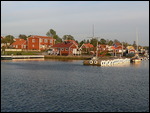
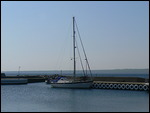
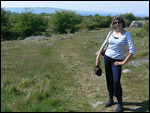



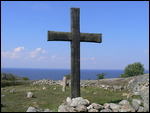
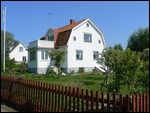
2025-05-22